
Empowering Families:
Coachella Valley
Public Cemetery
District Launches
New Video Series PAGE


Empowering Families:
Coachella Valley
Public Cemetery
District Launches
New Video Series PAGE
The California Special Districts Alliance is a collaborative partnership between the California Special Districts Association (CSDA), the CSDA Finance Corporation (CSDAFC), and the Special District Risk Management Authority (SDRMA). These three highly respected statewide organizations join forces to help special districts in California better serve their communities.

CSDA Board and Staff
OFFICERS
ELAINE MAGNER, PRESIDENT, Pleasant Valley Recreation and Park District
PETE KAMPA, CSDM, VICE PRESIDENT, Groveland Community Services District
LORENZO RIOS, SECRETARY, Clovis Veterans Memorial District
DON BARTZ, CSDM, TREASURER,
Phelan Pinon Hills Community Service District
RYAN CLAUSNITZER, CSDM, PAST PRESIDENT, Alameda County Mosquito Abatement District
MEMBERS OF THE BOARD
VINCENT FERRANTE, Moss Landing Harbor District
JERRY L. GILMORE, Truckee Sanitary District
CURTIS JORRISTMA, Hilmar County Water District
JO MACKENZIE, Vista Irrigation District
ANTONIO MARTINEZ, Contra Costa Water District
NOELLE MATTOCK, El Dorado Hills Community Services District
GREG ORSINI, McKinleyville Community Service District
PATRICK OSTLY, North of River Sanitary District
FRED RYNESS, Burney Water District
ARLENE SCHAFER, Costa Mesa Sanitary District
KIMBERLEE SENEY, Gold Mountain Community Services District
STAFF
NEIL MCCORMICK, Chief Executive Officer
MEGAN HEMMING, Chief Professional Development Officer
MUSTAFA HESSABI, Chief Counsel
KYLE PACKHAM, Chief Advocacy & External Affairs Officer
CASSANDRA STRAWN, Chief Member Services & Communications Officer
RICK WOOD, Chief Finance & Operations Officer
TOMICKO ABELLA, Member Services Representative
AARON AVERY, Director of State Legislative Affairs
ANNA CALLAHAN, Legislative Assistant
EMILY CHA, Database & Online Communities Specialist
MARCUS DETWILER, Legislative Representative
BRENT FARRAR, Design & Websites Manager
AUBREY GOHL, Member Services Representative
VANESSA GONZALES, Communications Specialist
JOSE GUERRERO, Graphic Design/Video Specialist
COLLEEN HALEY, Public Affairs Field Coordinator
CASSIE HASKINS, Member Services Representative
LILIA M. HERNANDEZ, Associate Legislative Analyst
MICHAEL MEYER, Senior Member Services Specialist
CHRIS NORDEN, Public Affairs Field Coordinator
RICHELLE NOROYAN, Public Affairs Field Coordinator
CHRIS PALMER, Senior Public Affairs Field Coordinator
AMBER PHELEN, Management Analyst
RACHAEL POPPINO, Professional Development Coordinator
OLIVIA ROBERTSON, Member Services Specialist
JENNIFER SMITH, Professional Development Coordinator
OPHELIA SZIGETI, Legislative Analyst
ANTHONY TANNEHILL, Legislative Representative
ERASMO VIVEROS, Public Affairs Field Coordinator
DANE WADLÉ, Senior Public Affairs Field Coordinator
KRISTIN WITHROW, Communications Specialist
SANDY SEIFERT-RAFFELSON, PRESIDENT, Herlong Public Utility District
ROBERT SWAN, VICE PRESIDENT, Groveland Community Services District
JESSE CLAYPOOL, SECRETARY, Honey Lake Valley Resource Conservation District
ROBERTY HOUSLEY, Midway City Sanitary District
MIKE SCHEAFER, Costa Mesa Sanitary District
TIM UNRUH, CSDM, Kern County Mosquito & Vector Control District
THOMAS WRIGHT, Clovis Veterans Memorial District
LAUREN BRANT, Public Financial Management
DEREK BURKHALTER, Bickmore Actuarial
CHARICE HUNTLEY, River City Bank
FRANK ONO, iFish Group, Inc.
ANN SIPRELLE, Best Best & Krieger, LLP
KARL SNEARER, Apex Insurance Agency
DOUG WOZNIAK, Alliant Insurance Services, Inc.
BRIAN KELLEY, MBA, ARM, Chief Executive Officer
DEBBIE YOKOTA, AIC, Chief Risk Officer
MATT CLUTTERBUCK, Chief Financial Officer
WENDY TUCKER, Underwriting/Program Manager
ALANA LITTLE, Health Benefits Manager
ENRIQUETA (HENRI) CASTRO, Risk Control Manager
ROBERTO LOZANO, Liability Claims Manager
ALLISON BATEMAN, PHR, HR/Office Manager
PETR KOVALCHUK, Finance Manager
MARIA WILLIAMS, Member Services Manager
MARGARITO CRUZ, Senior Accountant
DANNY PENA, Workers’ Compensation Manager
ERIC LUCERO, Senior Risk Control Specialist
TERESA GUILLEN, Member Services Specialist II
MICHELLE BROWN, Health Benefits Specialist II
CANDICE RICHARDSON, Management Analyst
KEITH IKAMI, Claims Examiner I
LISA SANDOVAL, Member Services Specialist I
LILLI VINN, Accounting Technician
MARTHA WARREN, Senior WC Examiner
TAMARA BAKKIE, Senior WC Examiner
JOHN PESHKOFF, Senior WC Examiner
MARIETTA HARRISON, WC Examiner
CHER DARLING, WC Claims Examiner I
Special District Risk Management Authority 1112 I Street, Suite 300 Sacramento, CA 95814
tel: 800.537.7790 www.sdrma.org
CSDAFC Board and Staff
OFFICERS
JO MACKENZIE, PRESIDENT, Vista Irrigation District
VINCE FERRANTE, VICE PRESIDENT, Moss Landing Harbor District
ARLENE SCHAFER, SECRETARY, Costa Mesa Sanitary District
GLENN LAZOF, TREASURER, Regional Government Services Authority
MEMBERS OF THE BOARD
JULIE JOHNSON, Rainbow Municipal Water District
GREG ORSINI, McKinleyville Community Service District
CONSULTANTS
RICK BRANDIS, Brandis Tallman, a Division of Oppenheimer & Co. Inc.
JEFF LAND Brandis Tallman, a Division of Oppenheimer & Co. Inc.
DAVID MCMURCHIE, CSDAFC Legal Counsel
WILLIAM MORTON, Municipal Finance Corporation
STEFAN MORTON, Municipal Finance Corporation
ALBERT REYES, Kutak Rock LLP
NICOLE TALLMAN, Brandis Tallman, a Division of Oppenheimer & Co. Inc.
STAFF
NEIL MCCORMICK, Chief Executive Officer
MICHAEL MEYER, Senior Member Services Specialist
AMBER PHELEN, Management Analyst
RICK WOOD, Chief Finance & Operations Officer
CSDA Finance Corporation 1112 I Street, Suite 200, Sacramento, CA 95814 tel: 877.924.2732 www.csdafinance.net
For editorial or advertising inquiries: Phone - 877.924.2732 Email - membership@csda.net
California Special Districts Association 1112 I Street, Suite 200 Sacramento, CA 95814 toll-free: 877.924.2732 www.csda.net







It brings me great joy to congratulate the elected board members who will serve CSDA in 2025, including the incumbents who all successfully secured a returning threeyear term, as well as our new members Kathryn SlaterCarter from San Mateo County Harbor District and Scott Duffield from Heritage Ranch Community Services District. I'd like to thank each of them for their dedication as CSDA leaders, which in turn serves all special districts.
Across California, special districts operate with a spirit of collaboration and connection, to our fellow districts, our neighboring city and county agencies, and to the public we serve. This issue highlights many of the 2024 CSDA Award winning districts whose dedication to excellence shines bright. In each of these stories, it is apparent that collaboration, teamwork, and connection to purpose has propelled these programs and projects to success.

Take inspiration from these stories and consider getting more involved in CSDA in 2025. There are opportunities for special district professionals to share their time, expertise and enthusiasm throughout the year. From single-sessions to more in-depth roles, from expert feedback teams and select committees, to calls for presentations providing opportunities to create webinars, workshops or in-person conference sessions, CSDA values and encourages your participation. If you'd like to contribute but prefer a less structured commitment, visit the CSDA Community called Open Forum and lend your voice to your choice of questions posed by special district peers looking for solutions and viewpoints to challenges they face. If you are interested in learning how you can get more involved with CSDA, send an email to membership@csda.net and start the conversation. Enjoy the issue and congratulations to all our award winners!

November 3 – 6, 2024, Embassy Suites by Hilton San Rafael – Marin County
Now’s the time to register for the last comprehensive governance training of the year! This groundbreaking, curriculum-based continuing education program, which recognizes the necessity for the board and general manager to work closely toward a common goal, provides the knowledge base to perform essential governance responsibilities and is designed for both new and experienced special district board members. Earn your first-time certificate and learn the importance of civility
in board culture, how to set direction for your agency and communicate effectively to the public, how to steer the district to financial health, and understand the board’s role in human resources.
Already have your SDLA certificate? Come back for advanced training in special district laws, financial best practices, campaign contributions, legal counsel relationships, community engagement, and more!
SDRMA Spring Education Day
March 26, 2025, Sacramento
Special Districts Leadership Academy South
April 21 – 24, 2025, La Quinta
Special Districts Legislative Days
May 20 – 21, 2025, Sacramento
General Manager Leadership Summit
June 29 – July 1, 2025, Lake Tahoe Area
CSDA Annual Conference & Exhibitor Showcase: August 25 – 28, 2025, Monterey
Special Districts Leadership Academy North October 5 – 8, 2025, Redding Board Secretary/Clerk October 27 – 29, 2025, Sonoma County
Special Districts Leadership Academy Coastal November 16 – 19, 2025, Monterey Bay Area
https://www.csda.net/member-resources/career-center
The results are in! Congratulations to our incumbents who have all successfully secured another three-year term on the CSDA Board of Directors. We also welcome a new Board Member in our Bay Area Network and a new Board Member filling a vacancy for Seat B in the Coastal Network. Below are the final results:




Northern Network
Greg Orsini, Director McKinleyville Community Services District
Sierra Network
Noelle Mattock, Director El Dorado Hills Community Services District
Bay Area Network
Kathryn Slater-Carter, Commissioner San Mateo County Harbor District
Central Network
Patrick Ostly, General Manager North of River Sanitary District



Coastal Network
Elaine Magner, Director Pleasant Valley Recreation and Park District
Scott Duffield, General Manager Heritage Ranch Community Services District
Southern Network
Jo MacKenzie, Director Vista Irrigation District

Board Secretary / Clerk Conference
October 21 – 23, San Diego
Special District Leadership Academy Conference (North)
November 3 – 6, San Rafael
Policy and Procedure Writing
October 21, San Diego
Supervisory Skills for the Public Sector
October 21, San Diego
The Art of Electronic Records Management
October 21, San Diego
Virtual Workshop: Financial Management for Special Districts
October 30 & 31
Ethics AB 1234 Compliance Training
October 22
A Legal Tune-Up to Help You Stay in Peak Legal Shape
October 29

To view more details and to register for conferences, events, workshops or webinars go to the CSDA Events Page https://qrco.de/bddc8t
Virtual Quarterly Leadership Book Club: Sometimes You Win, Sometimes You Learn November 1
Virtual Workshop: SDLA Module 4: Board’s Role in HR
December 4 & 5
Building a Solid Financial Foundation
November 12
The Role of Technology in Diversity, Equity, and Inclusion
December 3

Send articles or ideas to membership@csda. net for consideration in the California Special Districts magazine, CSDA eNews, the CSDA website, or on our social media channels.
Questions Appear in CSDA Online Communities

Q: Diane Bowman
Our board has two open Board Positions, and we currently have three people interested in those positions. We have asked all three people to attend our next board meeting and introduce themselves. Are we able to then go into a “Closed Session” to vote on appointing two new members? It seems to fit under “personnel”.




Engage with your peers and ask questions on CSDA’s Open Forum community!
https://www.csda.net/communities-home
A: Pete Kampa, General Manager, Groveland Community Services District
Good afternoon! No, unfortunately the appointment of board members is not a personnel matter and must absolutely be done in open session. Good luck.
A: Linda-Marie Koza, Board President, Mendocino County Waterworks District #2
We may have a similar situation: two applicants for one open board seat, so I am interested in the answer to this. And I have an additional question: If the board wants to interview the two applicants, do we need to have a list of questions prepared in advance, to be sure we give each board member the same opportunities?
A: Michael Gadoua, District Manager, Bel Marin Keys Community Services District
I’ve experienced that exact issue at BMKCSD and RAFD - votes had to occur in open session as Board Members are not employees.
A: Maureen Elliott, Clerk to the Board, Murphys Cemetery District
I do not think that board members would have the same privacy protections as an employee. I know that the Vallecito Union School District holds all discussion on appointing a new board member at a public meeting and believe you must also do the voting on candidates and any discussions on the subject in open session.
CSDA Disclaimer: This section is not intended to be legal advice. Members should always seek legal counsel. The information contained here is for general reference purposes only.



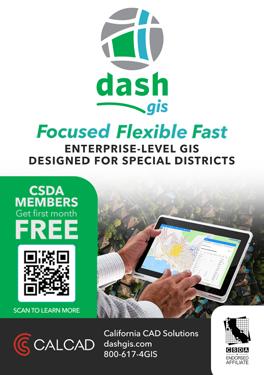












By Karen Evans, PhD, Training and Development Manager, CPS HR Consulting
Writing policies and procedures is an essential task for any organization, as these documents form the backbone of operations, ensuring consistency, compliance, and efficiency. Carefully crafted policies and procedures provide clear guidelines and expectations for employees, help in maintaining standards, and protect the organization from legal issues. This article will highlight the importance of these documents, key elements to include, and best practices for writing them.
Consistency and Standardization
Policies and procedures ensure that all employees follow the same rules and guidelines, leading to consistent actions across the organization. This consistency is vital for maintaining quality, safety, and fairness in the workplace.
Legal Protection
Clear policies can protect an organization from legal disputes. By documenting rules and procedures,
organizations can demonstrate that they have taken steps to comply with laws and regulations, thereby mitigating risk.
Training and Development
Policies and procedures serve as training tools for new employees. They provide a comprehensive guide on how tasks should be performed and what is expected in terms of behavior and performance, aiding in smooth onboarding and continuous development.
The headline should clearly indicate the content of the policy or procedure. It should be concise and specific, making it easy for employees to find the document they need.
The purpose section explains why the policy or procedure exists. It should outline the problem it addresses or the goal it aims to achieve, providing context for the document. continued ......>
This section specifies those to whom the policy or procedure applies. It can include departments, roles, or situations, ensuring that employees understand when and how the document is relevant to them.
Including information on how compliance will be monitored and enforced is also recommended. This can include regular audits, reporting requirements, and consequences for non-compliance.
Definitions
Including definitions of key terms ensures that all employees have a clear understanding of the language used in the document. This is especially important for technical or industry-specific terms.
The policy statement provides a clear and concise declaration of the organization’s stance on the issue addressed. It should be unambiguous and easily understandable.
Procedures detail the steps employees need to follow to comply with the policy. They should be written in a logical order, using clear and simple language. Visual aids like flowcharts can enhance understanding.
This section outlines the roles and responsibilities of individuals or departments in implementing and maintaining the policy or procedure. It ensures accountability and clarifies who is responsible for what.
A good policy or procedure is a living document that evolves with the organization. This section should include a contact for those who have questions. In addition, you can include the frequency of reviews, who is responsible for them and the process for reviewing and updating the document.
Involving employees from diverse levels and departments in the development process ensures that the policies and procedures are practical and relevant. It also encourages buy-in and compliance.
Don’t Overcomplicate – Keep It Simple
Use clear and concise language. Avoid jargon and complex sentences. The goal is to make the document easily understandable for all employees, regardless of their background or experience.
Ambiguity can lead to misinterpretation and inconsistency. Be as specific as possible about expectations, processes, and responsibilities. Use examples and scenarios to illustrate points when necessary.
Flowcharts, diagrams, and checklists can make complex procedures easier to understand and follow. Visual aids break down information into manageable parts, enhancing clarity and retention.
Documents
Make sure that policies and procedures are easily accessible to all employees. This can be achieved by storing them in a centralized location, such as an intranet site, and ensuring they are available in multiple formats if necessary.
Conduct Training
Training is crucial for effective implementation. Conduct training sessions to ensure that all employees understand the policies and procedures and know how to apply them in their daily work.
Don’t Let Policies and Procedures Stagnate
Organizations evolve, and so should their policies and procedures. Regularly review and update these documents to ensure they remain relevant and effective. Encourage feedback from employees to identify areas for improvement.
Writing effective policies and procedures is an essential task that requires careful planning and execution. By following best practices and involving employees, organizations can create documents that enhance consistency, compliance, and performance, contributing to your overall success.
Ginetta
Craig






By Charlotte Holifield, Calleguas Municipal Water District Manager of External Affairs/Public Information Officer
Over the past three weeks, southeastern Ventura County has experienced the eruption of several wildfires, including the Knolls, Sentinel, Sequoia, Sharp, and Rockfield Fires. In addition to efforts from on-the-ground local and regional personnel, firefighting agencies from Ventura and Los Angeles Counties have engaged in an aerial approach, deploying specialized aircraft to drop water to extinguish the flames.
But where did that water come from?
The answer is Lake Bard, a 10,500 acre-foot reservoir located at the Calleguas Municipal Water District headquarters in Thousand Oaks. Lake Bard serves as a backup drinking water source for the 640,000 Ventura County residents in the Calleguas service area—and doubles as an emergency supply to protect the community from fast-moving wildfire.
The firefighting aircraft, which included Coulson’s CH-47 Chinook Very Large Helitanker, two Ventura County Firehawk helicopters, and Firehawk and Bell 412 helicopters from Los Angeles County Fire Department,
made multiple “dips” into Lake Bard throughout late June and early July. The aircraft hover a few feet above the lake and use a retractable snorkel to fill their tanks. The Bell 412 can extract up to 360 gallons in under 30 seconds, Firehawks can pull in 1,000 gallons in less than a minute, and the Coulson can draw 3,000 gallons in about 90 seconds, making it an efficient method for quick response. “Our decision to utilize Lake Bard was crucial in controlling the recent brush fires,” noted Ventura County Fire Chief Dustin Gardner. “Its proximity, ample water reserves, and clear flight path allowed us to deploy resources effectively, minimizing the spread and ensuring swift containment.”
This isn’t the first time Calleguas has served an important role in local firefighting. Lake Bard was a key supply source during several major wildfires in recent years, including the Woolsey and Easy Fires. “Calleguas is honored to assist firefighters with their critical work in saving lives and property,” said Kristine McCaffrey, Calleguas General Manager, “and we will always welcome the opportunity to partner with our local firefighting heroes.”

Ready to take CSDA access everywhere you go? Say hello to our brand-new mobile app, CSDA – The Hub! This all-in-one resource is your gateway to staying informed, connected, and engaged with California’s special districts.
With CSDA – The Hub, good news is always at your fingertips. Dive into uplifting special district stories from across the state, catch up on original articles and news from CSDA, and stay updated with the latest from our advocacy and public affairs team. Whether you’re on the go or enjoying a coffee break, you’ll never miss out on the stories that matter.
Networking has never been easier! Join one of our Communities and connect with your peers. We’ve just launched our Water Community, offering a dedicated space for water district professionals to collaborate and share insights. Or you can ask a question, or provide an answer, on our Open Forum - And those are just two of the many peer-to-peer resources available through the app!
Looking to grow your skills or complete some required training? The Events tab is your ticket to all our professional development opportunities. From webinars and workshops to in-person conferences, you’ll find everything you need to stay ahead in your field. Plus, when you attend a CSDA conference, you can customize your agenda, access session materials, and even rate each session right from your phone.
CSDA – The Hub is more than just an app—it’s your key to unlocking the full benefits of your CSDA membership, wherever you are.
Don’t wait—download it today for iOS and Android!



Over 300 special district managers and emerging leaders came together in Anaheim during June 23-25, 2024, to learn, network, and share ideas on how to better lead and serve their communities.
1 2 Opening Keynote Speaker John Spence, recognized as one of the top business thought leaders, gave a motivating message on what it takes to lead in his keynote “The Future of Leadership”.
3 Keynote Speaker Jennifer Edwards gave a presentation “Bridge the Gap” during a general session.
4 5 6 Attendees enjoy the sports theme opening reception sponsored by Sitelogiq.
7 SDRMA CEO Brian Kelley addressed attendees at the Food & Wine Experience Reception, sponsored by the Special District Risk Management Authority.
8 9 10 We appreciate our sponsors and exhibitors!
11 CSDA staff ready to serve our members!
12 13 GM Summit attendees networking during Food & Wine Experience Reception.
14 15 16 17 Attendees enjoy networking with other special district leaders and exhibitors at the General Manager Leadership Summit.
18 CSDA CEO Neil McCormick and CSDA Board Secretary Lorenzo Rios, CSDM, presented the Special District Leadership Foundation District Transparency Certificate of Excellence to Union Public Utility District.


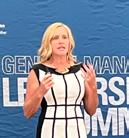









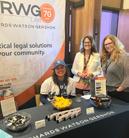






For more than 80 years, we have partnered with public, private and government agencies in California to help their communities thrive.






By Stephanie Smith, Director of Election Services, Best Best & Krieger LLP
In a world awash with government jargon, acronyms, and complex terminology, even seasoned public employees can find themselves tangled in a web of confusing language. For the general public, this often translates into frustration, disengagement, and mistrust in government processes. The antidote? Plain language. By transforming every written communication into clear, concise, and easily understood terms, government agencies can bridge the literacy gap and foster greater public engagement.
Government documents, forms, and notices are notorious for their reliance on acronyms and technical terms that can leave the average citizen scratching their head. Whether it’s an election notice, a ballot question, or a public service announcement, these communications are often written in a language that seems designed to confuse rather than inform. This is not merely an inconvenience; it’s a significant barrier to public participation and transparency.
When people don’t understand what the government is saying, they are less likely to engage with it. They might ignore important notices, misunderstand critical information, or feel alienated from processes that are supposed to serve them. This disconnect can erode trust in government institutions and diminish civic engagement.
Plain language is more than just a writing style; it’s a tool for democracy. It involves writing in a way that is clear, concise, and free of unnecessary jargon. The goal is to make information accessible to everyone, regardless of their background or education level.
The principles of plain language are straightforward: 1. Clarity: Use simple words and phrases that everyone can understand. Avoid jargon, technical terms, and acronyms whenever possible. If you must use an acronym, spell it out the first time it’s used and provide a brief explanation.
continued ......>
2. Brevity: Keep sentences and paragraphs short. Longwinded explanations and dense blocks of text can overwhelm readers and obscure your message. Aim for brevity without sacrificing the essential information.
3. Directness: Be direct and to the point. Avoid passive voice and convoluted sentence structures. Make it clear who is responsible for what, and what actions need to be taken.
When government communications are transformed using these principles, the impact is profound. Take, for example, election materials. When ballot questions are written in plain language, voters are more likely to understand the issues at hand and make informed decisions. Similarly, when forms and notices are clear and straightforward, citizens are more likely to complete them correctly and on time, reducing the need for follow-up and corrections. In a district government setting, simplicity in communication can turn routine interactions from mundane to insightful. Imagine receiving a notice about a road closure that is easy to read and understand. Instead of feeling frustrated and confused, you feel informed and prepared. This seemingly small change can lead to a more positive perception of the government and a greater willingness to engage with it.
For public agency employees, the shift to plain language writing can be transformative, both for them and for the public they serve. Here are some tips to help make the transition:
1. Know Your Audience: Tailor your writing to the needs and knowledge level of your audience. Consider what they need to know and how best to communicate it.
2. Edit Ruthlessly: After writing, go back and edit your work with an eye for clarity and simplicity. Cut unnecessary words and rewrite complex sentences.
3. Test Your Communication: Before finalizing any communication, test it on someone outside your agency. If they can understand it easily, you’re on the right track.
4. Use Tools: Consider using readability tools to check the complexity of your writing. Aim for a reading level that is accessible to a broad audience.
5. Seek Feedback: Regularly ask for feedback from the public and adjust your communication strategies accordingly. Understanding how your audience perceives your communication is crucial for continuous improvement.
By embracing plain language, public agency employees can make a significant positive impact on the communities they serve. Clear and effective communication not only ensures that information is understood but also fosters a sense of inclusion and respect. When people feel that the government is speaking to them in a way that is accessible and respectful, they are more likely to engage, participate, and trust in the processes that shape their lives.
The power of plain language should not be underestimated. It’s a simple yet powerful tool that can transform the public’s experience with agency government, turning confusion into clarity, frustration into understanding, and disengagement into active participation. By bridging the government literacy gap, we can build stronger, more inclusive communities where everyone has a voice and a clear understanding of how to use it.

























For the 17th straight year, Vista Irrigation District has been recognized by the Government Finance Officers Association of the United States & Canada for its annual comprehensive financial report. This achievement represents a significant accomplishment by the management team at Vista Irrigation.

West Basin Municipal Water District announced Eric Owens as the new Assistant General Manager. “West Basin welcomes Eric and his deep knowledge of water treatment technologies, the District and regional partners,” said West Basin General Manager E.J. Caldwell. “In this leadership role, his expertise and insights will be vital in optimizing the use of recycled water and groundwater, and ensuring sustainable water management for the communities we serve.”

Jean-Marc Petit became the new General Manager of Ironhouse Sanitary District, bringing nearly four decades of water industry and engineering experience to the role. He will direct Ironhouse in creating clean water solutions for more than 47,000 residents and businesses in the City of Oakley and unincorporated Bethel Island.

Orange County Sanitation District created a new communications department and announced long-time employee Jennifer Cabral will serve as the new Director of Communications overseeing a joint staff of 15 people, managing marketing, communications, community relations, public affairs, legislative and government affairs, and more!

The Riverside County Local Agency Formation Commission (LAFCO) recently appointed Dr. Bruce Underwood as one of its Commissioners on behalf of the Eastern Region of Riverside County. Underwood currently serves as Board Trustee for Coachella Valley Public Cemetery District, a position he has held since 2018. He also brings years of experience serving on various special district boards such as the Coachella Valley Recreation and Park District as well as the Coachella Valley Mosquito and Vector Control District.

Congratulations to Heather Dyer, Chief Executive Officer at San Bernardino Valley Municipal Water District, for receiving the 2024 Ecological Society of America Regional Policy Award. This award recognizes a policymaker whose record reflects the use of ecological science to inform policy decisions. She has been instrumental in the district’s strategic plan, has spearheaded regional cooperative efforts for local water infrastructure and in the development of the Upper Santa Ana River Habitat Conservation Plan.

By Kristin Withrow, CSDA Communications Specialist
We’ve all had the experience of calling an office and listening to the automated recording explain ‘due to high call volume, we are experiencing longer than normal hold times.’ What is a normal hold time and why do I get this message every time I call this company, regardless of whether I wait 30 seconds or 5 minutes? This is a tactic to manage expectations, an attempt to soften customer disappointment as they navigate the gauntlet of phone automation and an opportunity to advertise various selfservice options to the customer. The customer may also feel like the last thing that company wants to provide is customer service.
In an age of short staffing, short tempers and tall expectations, how can a public agency offer exemplary customer service with finite resources? Customer service expert and author of The 10¢ Decision – How Small Change Pays off Big Laurie Guest is the 2024 CSDA Board Secretary/ Clerk Conference keynote speaker and shared her thoughts on customer service tips public agencies can implement that convey customer caring without costing a bundle. There are some simple “10¢ Decisions” customer service
professionals can keep in mind to help them stay calm in difficult situations, or to simply excel in everyday interactions.
Tip #1 - Flip the Script: Resist the urge to assume the customer’s response will be negative. Instead, frame your reply positively.
I’m Sorry = Thank You: “I’m Sorry” - Think about the reflexive ‘I’m sorry’ regularly offered in conversations. Customer was put on hold - “I’m sorry.” Customer had to wait while you finished a phone call before you could greet them at the counter – “I’m sorry.” These are spaces where an insincere apology does not help the customer feel validated, the apology falls flat and is a platitude. Instead, flip “I’m sorry” to “Thank you.” Thank you for waiting, how can I help you?
Stop saying ‘Unfortunately’: Customer is requesting a technician visit their home to help them re-program their sprinkler system. This is a service your agency offers, but it is a relatively low priority, and the next available technician visit is in two weeks. ‘Unfortunately, our next technician appointment isn’t for two weeks’ should be

Laurie Guest
2024 CSDA Board Secretary/Clerk Conference Keynote Speaker
“If all we do is greet our customer with a smile and use their name when we know it, that’s a dime, that’s good, but it doesn’t make an impact alone. But you start to swap out words, add the right friendly tone to your voice, use body language to show engagement and interest –those are stackable.”
replaced with ‘We’d be happy to send a technician to help, our next available appointment is on <date>.’
Tip #2 - Tone-Speed-Friendliness: Moderate your speech to ensure your customer is receiving the information.
People come into service interactions from diverse backgrounds. Each person comes from a different environment, and those environments affect what you bring to every interaction, how you interpret those interactions and what you take away from them. There are generationally different expectations, language barriers, personality differences, cultural aspects to how we experience the world, and so many other variables that as customer service professionals we must learn to slow down to ensure we are providing the service each unique customer requires.
Laurie shares a story with her audiences to help them understand the compounding effect of these simple techniques. One day, she was walking down the street with her 20-year-old son, Evan. They’re walking along and come across a dime in the middle of the sidewalk. Evan steps over it and continues on. Laurie pauses and asks, “didn’t you see that dime?”
“Yah, I saw it,” replied her son.
“Aren’t you going to pick it up?” she asked.
“It’s not worth it,” he shrugged.
“So how much money has to be laying on the ground for it to be worth it for you to bend at the waist one time to pick it up?” she wondered.
He paused. “At least a buck.”
Laurie contemplated this for a while. She later polled her audiences to ask how many people would also have continued walking and not picked up the dime. She found a majority of audience members were more likely to pass on the free dime.
Laurie acknowledges that a dime doesn’t buy much these days. But then she points out a simple truth. If you collect a bunch of dimes and stack them up, then you roll them in paper and put them in a pillowcase – that’s a weapon!
“If all we do is greet our customer with a smile and use their name when we know it, that’s a dime,” said Laurie. “That’s good, but it doesn’t make an impact alone. But you start to swap out words, add the right friendly tone to your voice, use body language to show engagement and interest – those are stackable.”
In the world of public service, stacking the manageable elements of simple customer service together to provide an overall effect to the customer that you are there to meet their needs to the best of your ability, using the resources available, can make a big impact.
Small change. Big impact. How many dimes can you stack into your customer service processes?


Assemblymember Juan Alanis began his law enforcement career at 21 and has dedicated nearly three decades to public service, earning three life-saving awards. The 22nd Assembly District is his home, where he married his wife, Barbara, and raised their three children. Juan has served in nearly every community in Stanislaus County. Elected in 2022, he uses his public safety expertise to advocate for safer policies, reduce living costs for working-class families, protect Central Valley water rights, and champion the 22nd District’s agricultural and business communities.
How would you advise special districts who want to build on relationships with legislators and staff to best advocate for their district and community?
Special districts should actively reach out to their elected officials, who often aren’t aware of the issues districts face. By meeting with legislators and keeping them informed, officials can better understand and support the important work these districts do. I recommend that special districts invite representatives to events, arrange tours, and send regular updates about their operations. My office has an open-door policy where we do our best to meet with everyone who reaches out.
How do you see your background in law enforcement and local government informing your role as a member of your respective committee assignments?
My background in law enforcement and local government has taught me the importance of working with different stakeholders. I bring this collaborative approach to the Assembly, always aiming to educate myself on various issues. Working with legislators across the aisle has helped me understand issue areas I’m less familiar with, and I hope I can do the same for my colleagues. I strive to be a reliable source of knowledge and expertise for my colleagues, helping to lead California in a positive direction.
What are your current and long-term policy priorities, particularly as they relate to the governance and operations of special districts and other local governments?
I am a strong advocate for local control because local governments and special districts are most attuned to their constituents’ needs. Empowering them helps better serve the community. California has the highest population of any other US state, so it can be difficult to make one-sizefits-all policies. Special districts can adjust their services based on the population’s needs. For example, Modesto and Turlock’s Irrigation Districts in my area are models for other irrigation districts. We should support these successful districts in continuing their mission.
What specific challenges exist for communities in the Central Valley that may not exist in other parts of the state?
The Central Valley faces unique challenges, especially with water and healthcare. Water is a key issue for communities across the Central Valley. Being that the larger population centers rely upon our water supplies, it places greater strain on day-to-day life as well as agricultural opportunities in the region.
Access to affordable healthcare is another issue that hits Central Valley residents harder than urban populations. Because pay for healthcare workers is lower in the Central Valley in comparison to more affluent areas and large cities, the supply of workers is lower than the demand of our population, creating barriers to access. Moreover, our region has faced the threat of hospital closures, including the recent closure of the Madera Community Hospital. As a result, patients must drive further to receive adequate healthcare access, which places additional stress on our local healthcare system.
2024 CSDA General Manager of the Year
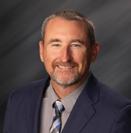
The Board of Trustees wishes to congratulate our General Manager on this outstanding recognition, and thank our employees, partners, and most importantly our community, for making this success possible. Joshua’s commitment to excellent customer service, transparency, sound financial management, and bold innovation, embody our District’s commitment to the constituents we serve. Thank you to California Special Districts Association for this recognition, and to all the Special Districts across California that help our communities thrive.
Coachella Valley Public Cemetery District:
2022 SDRMA Earl F. Sayre Excellence in Safety Award
2022 SDLF District Transparency Certificate of Excellence
2023 SDLF District of Distinction Accreditation
2024 CAPC Annual Conference Featured Cemetery District
2024 CSDA Exceptional Public Outreach & Advocacy Award
2024 CSDA General Manager of the Year


A big congratulations to this year’s CSDA Annual Awards winners! Individuals and districts both received awards acknowledging their achievements in various areas including exceptional public outreach, leadership, and innovations. The awards were presented at the CSDA Annual Conference & Exhibitor Showcase held September 9-12, 2024, in Indian Wells.
1 Exceptional Public Outreach & Advocacy Award (Large District Category)
Olivenhain Municipal Water District for its Engage and Influence Program
2 Exceptional Public Outreach & Advocacy Award (Small District Category)
Coachella Valley Public Cemetery District for it’s What to Expect Video Series
3 Innovative Project of the Year Award (Large District Category)
Rancho California Water District for Rancho Water Well Depth Measurement System
4 Innovative Program of the Year Award (Small District Category)
Camarillo Health Care District for its BALANCEfit and POWERfit fall prevention Program
5 Excellence in Technology Award
Turlock Irrigation District for its 2023 Water Year Operations: CSDA Vice President Pete Kampa accepted the award on behalf of the district.
6 Chapter of the Year Award
Stanislaus-San Joaquin Bi-County Special Districts Association
7 Staff Member of the Year Award
Tawnia Pett, Clerk of the Board/Executive Assistant, Orange County Mosquito and Vector Control District
8 Board Member of the Year Award
Dee Rosario, East Bay Regional Park District
9 General Manager of the Year Award
Joshua Bonner, Coachella Valley Public Cemetery District
10 Ralph Heim Public Outreach & Advocacy Award
Kirk Howie, Chief Administrative Officer, Three Valleys Municipal Water District
For more press content of these award winners or for questions about the CSDA awards program, contact CSDA Communications Specialist Vanessa Gonzales at (877) 924-2732 or at awards@csda.net. Thank you to all those who participated and submitted nominations this year. The 2025 CSDA award nominations will open in February 2025.






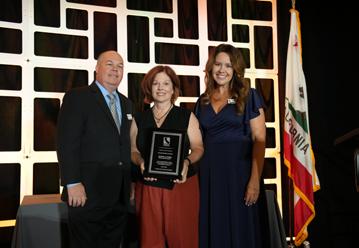













East Bay Regional Park District Board Director
2024 CSDA Board Member of the Year
Dee Rosario is retiring from the East Bay Regional Park District Board of Directors at the end of 2024 after a long career as both an elected board member and employee. Director Rosario’s contributions to the East Bay Regional Park District in both capacities are countless.


By Kristin Withrow, CSDA Communications Specialist
Olivenhain Municipal Water District (OMWD) was awarded the CSDA 2024 Exceptional Public Outreach & Advocacy award for a large district for their extensive efforts shaping water policy, advocating for their community and collaborating with regional partners. Over the past several years, the district counts among its accomplishments ongoing work with the nine water and wastewater agencies that make up the North San Diego Water Reuse Coalition that will result in an estimated regional water reuse of 11 billion gallons annually when all components of the projects are complete. Under the umbrella of the coalition, OMWD has successfully secured grants for the region from the U.S Bureau of Reclamation totaling $30 million, in addition to funding secured from the California Department of Water Resources’ Integrated Regional Water Management Program in support of collaborative water management to increase self-reliance totaling $4.95
million. They’ve expanded recycled water infrastructure, participated in a feasibility study of brackish groundwater desalination, developed strong relationships with legislators and policymakers along multiple government levels, participated in a legislative proposal to amend the California public contracting system to modernize the Public Contract Code for water agencies and infrastructure development, served as educators to inform policymakers on the need to invest in water infrastructure improvements and development of water supplies, and responded to calls for action from statewide agencies including those from CSDA’s advocacy team and the Association of California Water Agencies (ACWA). Their list of projects and accomplishments extends beyond that which we have space for in this magazine.
The district does not have a dedicated public relations staff member. Nor do they have a dedicated legislative affairs
position. How can a local water district that relies on a dedicated team of administrative staff accomplish so much?
OMWD General Manager Kimberly Thorner says the secret sauce starts with coordination between the staff and the Board of Directors through annual guidance and feedback reports to establish goals and objectives along with clear policy directives and strategic planning. In addition, an ad hoc board committee is available for guidance throughout the year as needed.
“Every year, our board updates and approves our legislative guidelines for the next full year,” explained Thorner. “It shows us, for example, Olivenhain will oppose any legislation or regulation that increases the cost of service, or it will show us which things the district will support. It’s a very hefty document, but it gives us critical direction in December of every year.”
With guidance from the top down, the staff can respond nimbly to action items and legislative trends as well as ensuring they are advocating at the appropriate levels for priority items on behalf of their district and the region. The feedback circle is complete when the staff presents their annual report highlighting progress and accomplishments to the board.
One of the key ways OMWD stretches the reach of their seven-person team is to collaborate regionally and statewide. They collaborate with the statewide California Water for All Coalition, they rely on ACWA and CSDA’s advocacy calls to action to determine issue alignment and to guide the amount of time they devote to issue areas. Taking advantage of opportunities to sign on to support or oppose letters eases the burden on district staff because they know the association is representing their opinion when providing legislative testimony.
In addition, OMWD utilizes the services of Nossaman LLC to provide specific legal counsel and represent the district in legislative affairs that are most important to the district.
“We have found we can access so much more with many different minds focused on an issue, and that helps us
decide what we are going to narrowly tailor and spend our energy on,” explained Thorner.
They also maintain close relationships with legislators, most recently on their water loss minimization strategies. Through that work, the relationships evolve into being able to provide subject matter expertise when legislators need to learn more about issues coming before them.
“Once we’ve established a rapport with local legislators, it’s easy to keep those relationships going,” Thorner said. “They tend to come back to us to seek opinions or even advice on future water issues.”
The glue that holds it all together is communication between all the people, issues, collaborators, coalitions and partners involved throughout the year. That begins with the direction and guidelines from the board, continues in the stated goals and objectives designed to keep activities on track, is ongoing to guide and monitor legislative outreach, and rounds out in an annual report back to the board.
Thorner credits OMWD Customer Services Manager
John Carnegie’s efforts to keep things smoothly on track with weekly meetings with the team who are primary communicators in areas of public relations, conservation, education, outreach and grants in addition to responding to customer needs. The staff wears many hats as they accomplish their objectives, and Carnegie is the conduit through which much of the communication flows.
OMWD celebrates its 65th year of service to the community this year. It’s clear the district has developed a culture of service, teamwork, collaboration and engagement with their community, their regional partners and policymakers. High-functioning team members who have a ‘can-do’ attitude and a desire to learn, create and grow are what make the difference at Olivenhain Municipal Water District.
CSDA congratulates Olivenhain Municipal Water District on receiving the 2024 Exceptional Public Outreach & Advocacy Award for a Large District.







By Michelle Rogers, Camarillo Health Care District Community Outreach and Education Manager
Joe was a marathon runner and enjoyed a healthy lifestyle. Following a diagnosis of a heart condition, he found himself becoming inactive at the age of 83. So, he signed up for the Camarillo Health Care District’s “Activate” program, which includes BALANCEfit and POWERfit, as well as other Fall Prevention classes, and started a new exercise regimen
to reduce his risk of falls. Now he feels more confident when walking and navigating spaces, increasing his activity, and working to reduce fall probability. Falls are a threat to health, and especially for older adults, and can reduce the ability to remain independent. The
Centers for Disease Control and Prevention (CDC) reports that 1 in 4 adults age 65+ fall every year, resulting in 3 million admissions to ER, and falls are the No. 1 cause death from injury among older adults.
BALANCEfit and POWERfit are categorized under the district’s health and wellness programs, specifically Fall Prevention. After recognizing a need in the community and receiving feedback from clients about their interest in fall prevention programming, the district purchased a Senso balance machine, a scientifically validated training system for cognitive motor training, and created a unique BALANCEfit program in October 2021, designed to help individuals improve cognition and reduce risk of falling by having participants complete dual-tasking exercises.
In Fall of 2023, the district additionally developed a companion program called POWERfit, available for graduates of BALANCEfit to build their progress. This “two-step” program guides and motivates participants to achieve their goals, build confidence, increase daily activity levels, and improve physical and mental capacities.
“Goals of both programs are to encourage adults to become physically active and reduce their risk of falls by working on their cognitive and motor activities,” said Blair Barker, the district’s Program Officer.
BALANCEfit focuses on reducing fall risks and improving cognition while progressing participants through a series of games that get more complex and challenging as they move through the levels. The games focus on cognitive and physical skills, some of which may be second nature, and some of which might be more challenging, especially for those with a cognitive impairment.
The games are easy to learn and follow and enhance motor-skill learning while having fun. The device tracks performance and makes the games more challenging as you get better at them. An assessment evaluates physical and cognitive function, including reaction time, ability to take in information, ability to process, and ability to then do the requested activity. It aims to improve reaction time, attention and processing, short-term memory, balance control, and cognitive and physical flexibility.
POWERfit includes the balance machine and its benefits, while also incorporating strength training to reduce such fall-risk factors as reduced muscle strength, gait and balance disorders, fear of falling and isolation. These risk factors are addressed by incorporating strength and balance exercises, increasing socialization, and educating participants on cognitive and motor skills to improve mind-body connection.
“With these companion programs, the emphasis on ‘thinking before moving’ is meant to address the actions of everyday routine,” said the district’s Fall Prevention Coordinator, Elsa Sierra. “The program aims to increase participants’ confidence and shift their attitudes and mindset from ‘falling is just part of getting older’ to an outlook on modifiable life factors.”
Studies have shown that dual-tasking exercise, which includes both motor and cognitive skills, is more beneficial in improving executive function than exercising those functions separately. Executive function is used in everyday activities with our actions, processing, and planning. Therefore, improving executive function can help in reducing the risk of falls, which is a major public health concern in older adults.
Participants work one-on-one with a facilitator and receive individualized attention and education. After the POWERfit program, participants receive a set of resistance bands and illustrations of the exercises that were performed in the program, allowing them to continue improving and maintaining range of motion and strength, both of which are essential to preventing falls and injuries from falls. Participants are also encouraged to participate in other fall prevention classes, such as Tai Chi for Arthritis, Matter of Balance, Bingocize and Walking Group, to continue staying active and increase socialization.
As of June 2023, more than 250 individuals have completed BALANCEfit, POWERfit or both programs. There has been a noticeable increase in enrollment for other fall prevention classes offered by the district as a result of referrals from BALANCEfit and POWERfit completers.
As a result of their impressive efforts, Camarillo Health Care District is the winner of the 2024 CSDA Award for Innovative Program of the Year by a Small District.

By Partner Kevin Dale and Associate Taylor Morga; Atkinson, Andelson, Loya, Ruud & Romo
Effective January 1, 2024, California cities, counties, and special districts became subject to a new union representation rights law related to temporary employees. Specifically, the MeyersMilias-Brown Act (“MMBA”) was amended by allowing unions to request that public employers include temporary employees in the same bargaining unit as permanent employees.
By way of background, the MMBA is the collective bargaining law that governs relations between cities, counties, and special districts and their unions. The MMBA requires public employers to meet and confer in good faith with exclusively recognized employee organizations (i.e., unions) related to wages, hours, and other terms and conditions of employment.
This new law is intended to ensure that temporary employees are protected by the MMBA, and so that the increasing use of temporary employees does not undermine public employee labor relations. In a nutshell, AB 1484 grants temporary employees who have been hired to perform similar work to the type performed by
permanent public employees the ability to be automatically included in an existing bargaining unit. Temporary employees are defined in Government Code Section 3507.7 as: “a temporary employee, casual employee, seasonal employee, periodic employee, extra-help employee, relief employee, limited-term employee, per diem employee, and any other public employee who has not been hired for a permanent position.” Employees who are employed by a temporary services employer, as defined in Labor Code Section 201.3, are not classified as temporary employees. Public employers should examine any contracts they have with temporary service employers. If these contracts do not meet the specific requirements described in Labor Code Section 201.3, an employer may have an obligation to include workers performing services under such contract in an existing bargaining unit.
Notably, this law does not mean that public employers are required to provide the same terms and conditions of employment to temporary employees that they provide to permanent employees. Rather, an employer and union can negotiate related to the wages, hours, and other terms
This new law is intended to ensure that temporary employees are protected by the MMBA, and so that the increasing use of temporary employees does not undermine public employee labor relations. In a nutshell, AB 1484 grants temporary employees who have been hired to perform similar work to the type performed by permanent public employees the ability to be automatically included in an existing bargaining unit.
and conditions of employment that apply to temporary employees. The negotiated terms and conditions of employment for temporary employees can be addressed in an addendum to the employee organization’s current memorandum of understanding. However, the employee organization may request that the terms and conditions of employment for permanent and temporary employees be addressed in a single memorandum of understanding for future negotiations.
A public employer is required to provide temporary employees with their job description, wage rate, eligibility for benefits, anticipated length of employment and procedures to apply for open permanent positions, upon hire. The employee organization must be provided with the same information within five (5) days of the hire date for any temporary employees. A public employer is also required to provide an employee organization with the employee information of a temporary employee as required by Government Code Section 3558. AB 1484 also grants temporary employees and their employee organization the power to file a complaint alleging an unfair practice charge
for a violation of Government Code Section 3507.7 with the Public Employment Relations Board.
While AB 1484 does not create any new or additional rights for public employees, public employers should be cognizant that unions can request that temporary employees be included in an existing bargaining unit. Further, we recommend that public employers review any contracts for services they may have with temporary service employers. If these contracts are not in compliance with Labor Code Section 201.3, the requirements of AB 1484 may apply to these contract employees. Lastly, it is worth mentioning again that while AB 1484 establishes the right of unions to request that temporary employees be included within an existing bargaining unit of permanent employees, the employer and union can negotiate different terms and conditions of employment that will apply to the temporary employees.
If you or your agency need any assistance regarding temporary employees and union rights, please contact the authors or another member of the AALRR labor and employment team.


By Enriqueta Castro, CSP, Special District Risk Management Authority Risk Control Manager
Electric bikes (e-bikes) have become very popular over the last few years. They can be fun to ride and a great form of transportation. Employers are also seeing the benefit of using e-bikes in the workplace. They can be cost effective and a convenient mode of transportation.
Is your District considering the use of e-bikes? If so, it’s important to first consider the risks. Once an e-bike is used in the workplace, it becomes a piece of equipment that falls under Cal/OSHA’s requirement to protect employees by conducting a risk assessment and implementing effective control measures.
First, let’s discuss what an e-bike is and is not. An e-bike is a bicycle with a motor and rechargeable battery that helps riders pedal faster and farther. The motor is powered by the battery and assists the rider when they pedal, or in some cases, by using a throttle. It’s important to note the Department of Motor Vehicles (DMV) treats an e-bike as a bicycle and does not consider it a motorized scooter under the California Vehicle Code (CVC). E-bike laws define the following three types of e-bikes:
• Type 1: Bikes with a top assisted speed of 20 mph that must be pedaled to operate.
• Type 2: Bikes with a top assisted speed of 20 mph that can be operated without pedaling by using a handlebarmounted throttle.
• Type 3: Bikes with a top assisted speed of 28 mph that must be pedaled to operate.
The laws also outline the requirements on how and where to legally ride e-bikes. E-bike riders are subject to the same rules and legal requirements that apply to traditional bicycle riders, such as proper passing, following all traffic laws, and obeying posted speed limits, to name a few.
California’s E-Bike Guidance at www.calbike.org provides additional information on the different types of e-bikes, the rules of the road, the four classes of bikeways, and other important information.
When conducting a risk assessment, consider the potential for employee injuries, property damage, and liability exposures. The district should first consider where and
how the e-bikes will be used. For example, will they be used only on district property, public roadways, or specific types of bikeways? Will they be used only during daylight hours in good weather? Will employees need to carry any supplies, tools, etc. while riding the e-bikes? This will assist in determining employee risks.
Potential employee exposures include being struck by vehicles, bicycles, or scooters, and hitting stationary objects. Since e-bikes can weigh up to 60 lbs., there is also potential for strain injuries while lifting the e-bike when it’s fallen over.
Potential property and liability exposures can come from the lithium-ion batteries, which are usually the power source for e-bikes. If the e-bikes and batteries are not properly maintained, stored, or inspected regularly, the batteries can catch on fire or explode, causing damage to property and possibly injuring employees and the public. In addition, an unskilled rider can increase the liability risks by colliding with pedestrians, vehicles, and property.
Once you’ve identified the risks, it’s time to identify the types of control measures the District should put in place, such as:
• Safe Operating Procedures (SOPs) - Develop procedures on safe operating requirements, personal protective equipment requirements, proper maintenance and storage, emergency response procedures, authorized user approval process, etc. Your primary source will come from the manufacturer’s instructions. The
National Fire Protection Association’s E-Bike and E-Scooter Safety publication at nfpa.org/ebikes, provides fire prevention guidance and safety tips.
While current laws only require helmets for riders 17 and under, we strongly recommend that properly sized helmets be required when employees are riding e-bikes while working on behalf of the district. In addition to wearing clothing that covers the legs, arms, and feet, we also recommend reflective vests and elbow/knee pads.
• Employee Training – Cal/OSHA requires employee training on the safe operation of any equipment the employee operates; this includes e-bikes. Training should include a review of the SOPs, how to safely operate the e-bike, how to safely lift the e-bike from the ground, and actual practice and observation at a safe location. A free on-line course is available through the California Highway Patrol CHP Electric Bike Safety Training chp.ca.gov/Programs-Services/ServicesInformation/Bike-and-Ped-Safety
If your district is considering purchasing e-bikes, we recommend contacting your property/liability provider to determine coverage options and specific requirements that may apply. If your district is considering allowing employees to operate their personal e-bike while working on behalf of the district, it’s important to note there are no California requirements for e-bikes to be registered or insured, which may increase the district’s exposure.



By Coachella Valley Public Cemetery District
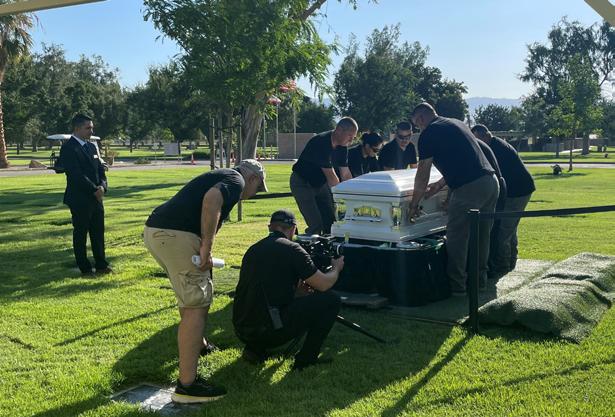
Interring a loved one is one of the most solemn occasions a family is faced with. The emotional toll of facing loss, coupled with the financial and practical hardships that can come with death, can often be overwhelming for people. In the middle of that turmoil, families must also prepare to pay their last respects. The actual interment of a loved one can represent the last, and most ceremonially important phase of saying goodbye.
The Coachella Valley Public Cemetery District takes this responsibility seriously and understands the vital role it plays in finding closure after the loss of a loved one. While our responsibility to the community to maintain the final resting place of over 23,000 interred remains does not end with the service, it is certainly a cardinal moment in the process for our families.
The suddenness of loss often makes preparing for an interment ceremony challenging. Unlike so many notable events that mark the lives of people, death can come unexpectedly and create a time sensitive need that finds families rushing through a process with little or no
information on what is to come. The district’s Board of Trustees and management team wanted to change that.
In 2022, the Board of Trustees approved district management to begin work on a video project entitled, “What to Expect”. The project would cover the two major services provided by the district; in-ground interment (burials) and columbarium inurnment (niches). The idea was to share with the family vital details on what to expect when they arrived for their service, the details that when properly executed can contribute to a safe, smooth, and dignified ceremony for the family and their guests.
You may not think it, but much goes into the execution of an interment service. From the way vehicles ingress into the cemetery, to the proper transfer of the remains to the lowering device by pallbearers, preparation and understanding can go a long way toward allowing a family to have the outcome they desire. This information must be presented in a way that is easy for the family to review and understand, and easily shared with other family and friends who may play a role in the service.
Principal filming began in 2022, with postproduction and final edits concluding in the latter portion of the year. To best serve the needs of our community, the videos were produced in both English and Spanish with subtitles. Each video, spanning 5-7 minutes, offers clear, step-bystep guidance that families can easily comprehend. The district has made them available through our website and social media outlets for easy accessibility to the entire community.
The reception has been outstanding. One community member, preparing to bury her mother, expressed gratitude, “Thank you so much for doing this. We really did not know what to expect, this video helped us so much.”
The videos have also aided our maintenance team in providing the safest environment possible. District Maintenance Manager and Safety Compliance Lead Guillermo De La Tore noted how tiny details can make the difference.
“There is a process for placing the casket onto the lowering devices that if done properly, will allow for a safe and orderly transfer of the casket to the device. In the past we
were required to explain this to the pallbearers when they arrived for the service. Now, many of them have already watched the video and are better prepared for the process,” De La Tore explained.
District Board Chair Ernesto Rosales sums up the aim of the project, “Special Districts are just that,” said Rosales. “We provide a very special and unique service to our community. As a Board, we want to provide that service with the best interest of our public in mind, and to the best of our ability. We are enormously proud of this project, as it represents in so many ways our commitment to accomplishing that for our neighbors.”
Joshua Bonner, District General Manager, shared a similar sentiment, “The ‘What to Expect’ video series exemplifies our dedication to serving our community with compassion and clarity, ensuring every family receives the respect and guidance they deserve,” he said.
The Coachella Valley Public Cemetery District “What to Expect” video series is available on their homepage for viewing at CVPCD.org.
On behalf of our District, thank you to our Board of Trustees for your leadership, vision, and steadfast support. Your dedication and service, along with the support of our community, make these awards possible.




By Kristin Withrow, CSDA Communications Specialist
There are as many layers of complexity to water management in California as there are layers of geology, aquifers and water basins in our vast state. Water management is a broad term for the many agencies, offices and professions that deal with understanding the ebb and flow of California water and the innumerable demands placed on supplying, conserving, purifying, capturing and monitoring it. The Sustainable Groundwater Management Act (SGMA) passed by the California Legislature in 2014 requires local agencies to adopt groundwater sustainability plans for groundwater basins.
One such agency is the mighty Rancho California Water District (Rancho Water) serving 45,000 connections and more than 150,000 people in the area around Temecula and including portions of Murrieta and unincorporated southwest Riverside County. One significant aspect of their mission is the monitoring and recharging of the groundwater basin on which the district resides. In the past, monitoring was a manual process using probes and a bubbler system to measure well depths in the 57 wells
served by the district.
The operations team at Rancho Water was dissatisfied with the time requirement and variability of results in the manual process and sought a more reliable method of well depth monitoring. The resulting Well Depth Measurement System (WDMS) is a trailblazing solution that provides automated, reliable, accurate well depth measurement using a modular design that integrates easily with existing infrastructure and incorporates a sophisticated algorithm to record measurements with exceptional precision.
“We looked at the other technologies available,” explained Maintenance Projects Manager Sonny Miller. “We had tried them, but they weren’t trusted. We wanted to use a system based on the sounding model of the manual method but automate it”. So, Miller and the Rancho Water electrical services department designed, built, programmed and tested it, then monitored it for a year to check for accuracy and repeatability.
With an accuracy of +/- 0.200 inches and repeatability of +/- 0.125 inches at 500 feet, their WDMS surpasses industry
standards, ensuring reliable performance in diverse environmental conditions. Additionally, over a span of years, the automated system operates at a fraction of the cost when taking into consideration the probes, bubblers, maintenance and staff hours of the manual system.
Beyond well depth, the system’s accuracy will allow the district to conduct further testing that will reflect well efficiency, specific capacity and well rehabilitation.
The first four WDMS well installations will be complete before the end of 2024, with the remainder added in the first half of 2025. Their intention is to make the system technology available to all applicable water agencies so others can benefit from their work.
“If there are other districts out there that are serious about their groundwater, and are taking the SGMA seriously, they will be able to use a tool like this to get accurate, repeatable data,” said Miller.
Rancho Water General Manager Jason Martin is thrilled with the accomplishment of the operations team. “The district is quite impressed with our operations team for devising this innovative idea, which goes above and
beyond their usual responsibilities,” he said. “Sonny and his team not only had the vision to conceive this idea but also the dedication to successfully implement it. Their extraordinary effort surpasses all expectations.”
The California Special Districts Association agrees with Martin on this point, so much so that Rancho Water’s Well Depth Measurement System was selected to receive the 2024 Excellence in Technology Award for this accomplishment that promises to drive success for Rancho Water and has implications for operational improvement across the industry.
“Innovation is something our Board really looks for us to be doing all the time,” explained Public Affairs Manager Kimberly Wall. “So, it’s no surprise that they were very supportive of this idea.”
Congratulations to Rancho Water for their innovative approach to water operations, and to their visionary board of directors for supporting the team that invented this novel technology.
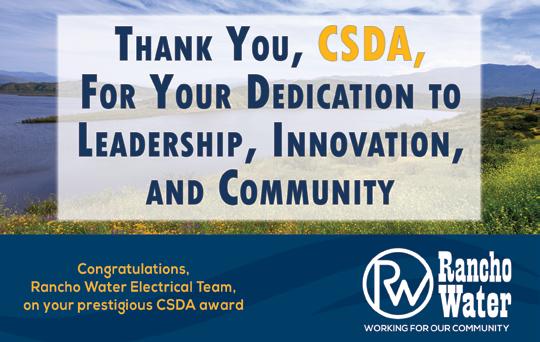














By Randall Dziubek, CalPERS Deputy Chief Actuary, Valuation Services
Special districts across California are integral to the state's public service ecosystem, providing essential services ranging from water management to public safety. As districts plan for the future, financial feasibility of their pension commitments with CalPERS is key.
As the nation’s largest public pension fund, with over 2 million members and assets exceeding $500 billion, CalPERS offers substantial support to special districts. Its extensive resources and expertise can help districts navigate financial planning, manage pension obligations, and optimize their retirement systems to ensure long-term sustainability and stability.
For special districts considering joining, CalPERS offers retirement security, but it also requires consideration of long-term financial commitments. Baseline projections of future contributions, provided to new districts in the “New Agency” report, are a good starting point, but districts should review all potential financial scenarios. Specifically, understanding how investment returns could affect contribution rates is crucial for financial planning.
While CalPERS’ projected investment return is 6.8%, actual returns can vary, and this can have a significant impact on your required contributions. By planning for both best-
case and worst-case scenarios, districts can ensure they remain financially viable even in less favorable economic conditions.
Another key consideration is the management of unfunded liabilities. CalPERS encourages districts to actively reduce these liabilities. Special districts can make Additional Discretionary Payments (ADPs) or accelerate their payment schedules.
While these strategies may require higher contributions in the short term, they often result in material long-term savings by reducing interest costs. Districts must weigh the benefits of these strategies against their current financial capacity to ensure they are making the best decision for their long-term fiscal health.
Contribution volatility can be a significant challenge for special districts, especially smaller ones. To help with this challenge, districts may consider establishing a “Section 115” trust. This can be used to pay CalPERS-required contributions during years when the district’s budget is under pressure. CalPERS offers the California Employers’ Pension Prefunding Trust (CEPPT) that is specifically
designed to help districts manage this volatility. By setting aside funds during better financial years, districts can maintain stability and predictability in their contribution schedules.
As of June 30, 2023, there were roughly 900 special district plans in CalPERS. Over the last five years, more than a dozen new special districts joined CalPERS. Special district plans range in size from zero to just under 4,000 active members. Most special district plans are classified as “pooled” plans, meaning they are grouped with other small plans to share the risk of events that differ from actuarial assumptions. This pooling helps reduce the year-to-year volatility in required contributions, but also means that the demographic experience of other plans in the pool can impact an individual district’s required contributions.
For many special districts, contributions are expected to increase slightly in the near term before gradually declining. These projections account for the continued phase-in of past investment losses, which will eventually taper off as unfunded liabilities are paid down. Districts must keep a close eye on these projections and adjust their financial planning accordingly.
CalPERS is working on a new project that will streamline and combine actuarial valuation reports for our “pooled”
plans. For example, a special district agency with only nonsafety members may be receiving three individual actuarial reports – separate reports for classic tier 1 members, classic tier 2 members, and PEPRA members. In the future, a single report will be provided for each group of members, making it easier for districts to understand and manage their financial commitments.
CalPERS will be working with districts and other stakeholders for feedback throughout this process to ensure a smooth transition. CalPERS believes this approach will provide for greater overall understanding of financial commitments to CalPERS and the ability to more effectively manage unfunded liabilities.
Participating in CalPERS offers both opportunities and challenges for California’s special districts. The system provides a stable retirement plan for employees, but it requires districts to engage in strategic financial planning to manage contributions, unfunded liabilities, and potential risks. By fully understanding the financial implications and using the tools and strategies available, special districts can make informed decisions that ensure their financial sustainability while continuing to provide essential services to their communities.
If you’re interesting in contracting with CalPERS, you can view more information about the CalPERS contracting process on our website.
Over the first half of 2024, CSDA Finance Corporation has helped to facilitate over $39.9 million in projects and purchases for special districts. Our team of consultants is ready to use their decades of experience to find competitive financing solutions for your agency, no matter the size of your need.
EXAMPLES OF 2024 FINANCING PROJECTS:
• Ambulances
• Temporary Fire Station
• Bulldozer
• Water Treatment Facility Improvements
• Energy Efficiency Project
• Well Installation Project
• Fire Engine
• Working capital
• Infrastructure
CSDA Finance Corporation is here to help. Visit www.csdafinance.net to submit a quote request online or call 877.924.2732 for more information.



By Amy S. Ackerman, Partner and Lead Government Attorney, Renne Public Law Group
“Local governments make many of the most important decisions that affect Californians’ everyday lives. They build and repair public streets, they define a neighborhood’s character through planning and zoning, and they decide where to place public parks and where to allow restaurants, bars, and liquor stores to operate. They make decisions about public transit and decide where to site industries that cause pollution. They provide police services and determine the level and type of policing and other first responder services, they educate our children, they operate or regulate local utilities, and they have the power to levy taxes. The people exercise control over these choices by electing representatives to city councils, county boards, boards of education, community college boards, special district boards, and other bodies.”
(Pico Neighborhood Assoc. v. City of Santa Monica (2023) 15 Cal. 5th 292, 305.)
To make those important decisions on behalf of Californians, local governments, including special districts, must function effectively and efficiently. While there are many types of special districts with different purposes, they share general governance structures and principles. To ensure effective function, district officials and employees must understand their roles, the laws that govern their actions, and learn to “stay in their lane.” By far, the most common reason for dysfunction in local governments is when the various actors fail to understand or adhere to the roles they play based on their positions.
The boards of directors of special districts, who may be elected or appointed, play a key oversight role. They set policy and direction for the district by adopting ordinances, resolutions, and policies. They are responsible for financial oversight of district funds, by adopting the budget, ensuring adequate financial controls and required audits, establishing financial reserves, and approving capital improvement plans.
Boards also play a role in employment. They select and hire the general manager, legal counsel, and sometimes the district clerk or secretary. Aside from hiring those employees, boards guide employee relations by approving personnel policies, salary structures and benefits. They do not otherwise involve themselves in decisions regarding individual employees.
Most significantly, the authority of the board is vested in the board, as a unit, and not in individual board members. And, under the Ralph M. Brown Act (Government Code section 54950 et. seq.), a board must take its actions at public meetings. Effective boards learn to work together to achieve the goals of the district. Individual board members may not set policy, direct staff, influence the selection of contractors or employees, or otherwise interfere with the administration of the district.
District managers are responsible for carrying out the directions and policies of the board and answer to the board. Managers administer the activities of the district and hire and manage employees. Managers must keep their boards apprised of district business. And, importantly, the manager and employees provide analysis and recommendations relating to board actions.
Board secretaries or clerks play an important role in the district and, often, have the most interaction with District residents. They ensure that proper notice is given to the public of Board action, prepare agendas, publication notices, and other documents, and keep minutes and the historical records of the district. Clerks and secretaries assist the board in carrying out its duties and do not serve as personal secretaries to board members.
Legal counsel to the district provides legal guidance to and representation of the district. Under state law, when the client is an organization – such as a special district – the client is the district itself, acting through its duly authorized directors and employees. (California Rules of Professional Conduct, Rule 1.13.) That means that legal counsel owes its duty to the district, and not to individual board members or employees. While a district acts through its board, its officers, and its employees, these individuals do not establish an attorney-client relationship with the district legal counsel.
Finally, each of these positions serves important roles in carrying out the work of the district. Each must put the district’s interests before their own personal interests. As the California Court of Appeal stated, “a public office is a public trust created in the interest and for the benefit of the people. Public officers are obligated to discharge their responsibilities with integrity and fidelity.” (City Council v. McKinley (1978) 80 Cal.App.3d 204, 213.) State laws governing ethics, public meetings, public records, financial transactions, and discrimination and harassment help ensure that public officials serve the interests of their district, not their personal interests, in making those important decisions affecting the lives of Californians.
Learn more from Renne Public Law Group on this topic at their upcoming Board Secretary/Clerk Conference breakout session on October 23 in San Diego! Register!
https://www.csda.net/boardsecretary/home


By Chantal Unfug, NSDC National Public Affairs, Outreach & Engagement Director
Did you know…As a member in good standing of the California Special Districts Association (CSDA), your district is automatically part of the growing National Special Districts Coalition (NSDC), giving you access to a network of over 8000 special district members, Federal advocacy intel, and Federal funding technical assistance?
This ‘dual membership’ not only strengthens the collective voice of special districts but has also opened doors to enhanced advocacy and collaboration on a national scale with Paragon Government Relations. Additionally, CSDA members have gained exclusive access to discounted grants resources and services provided by The Ferguson Group, further bolstering opportunities and capacity for districts to secure funding for critical projects. You need to know… because, as Alexis DeToqueville famously wrote about the unique structure of the new American Democracy and her inhabitants, “he practices the art of the government in the small sphere within his reach,” NSDC is all about the strength of a unified voice by collaborating and advocating for and with you, and your 35,000 special district colleagues across the country.
While DeToqueville wrote about the merits of authority at the most local level, NSDC takes to heart that there is strength in numbers. A measure of our collective success is the National Grant Accessibility Act HR 7525/S. 4673. Led by NSDC, the bill was approved with wide bipartisan support by the full House of Representatives on May 6, 2024, passed out of the Homeland Security and Government Affairs Committee on July 31, 2024, and at the time of this publication, we hope when passed in the Senate and signed by the President, would establish a firstever, formal definition of “special district” in federal law.
Now you know… NSDC members access significantly discounted grants resources and services with The Ferguson Group (TFG), our partner and leading government relations and grants consulting firm specializing in securing federal funding. TFG offers invaluable expertise and support to help special districts navigate the complex grants landscape, from identifying funding opportunities to developing competitive grant proposals to securing vital funding for infrastructure, public services, and community development projects.
Actuarial Retirement Consulting, LLC www.awenarc.com

AllPaid www.AllPaid.com
California CAD Solutions (CALCAD) www.calcad.com
California CLASS www.californiaclass.com
CPS HR Consulting www.cpshr.us
CSDA Finance Corporation www.csdafinance.net


Atkinson, Andelson, Loya, Ruud & Romo www.aalrr.com
Best Best & Krieger www.bbklaw.com
California Bank of Commerce www.californiabankofcommerce.com/


Enterprise Mobility www.enterprisemobility.com
GovDeals www.govdeals.com
Special Districts Risk Management Authority www.sdrma.org

Streamline www.getstreamline.com
Umpqua Bank www.umpquabank.com
Utility Cost Management, LLC www.utilitycostmanagement.com


SiteLogiq www.sitelogiq.com
Five Star Bank www.fivestarbank.com
Liebert Cassidy Whitmore www.lcwlegal.com
Richards Watson Gershon www.rwglaw.com

Golden Hills Community Service District has always valued efficiency, understanding that clear communication is essential for outstanding customer service. When General Manager Christopher Carlson was Operations Superintendent, he began the task of mapping the district's infrastructure assets from paper maps into Google Earth. This process took over two years of diligent effort to create a more accessible online format. While this digital as-built map was a useful improvement, it still had limitations, particularly with accuracy. Staff frequently had to make calls back and forth between the office and the field to clarify details about specific assets, highlighting the need for a more precise solution.
"We needed more accuracy and had simply outgrown Google Earth," noted Davin Blain, Operations Superintendent. After hearing from neighboring districts about the benefits of GIS systems, Carlson, now General Manager, knew there were advantages to using CSDA
Brown Armstrong Accountancy Corporation
www.bacpas.com
CalTRUST
www.caltrust.org
Centrica Business Solutions
www.centricabusinesssolutions.com
Cole Huber LLP
www.colehuber.com
Complete Paperless Solutions
www.cps247.com
Eide Bailly CPAs
www.eidebailly.com
Kosmont Financial Services
www.KosmontFinancial.com
Laserfiche
www.laserfiche.com
National Demographics Corportaion (NDC) www.ndcresearch.com
NBS www.nbsgov.com
Nossaman, LLP www.nossaman.com
Redwood Public Law, LLP www.redwoodpubliclaw.com
Slovak Baron Empey Murphy & Pinkney LLP www.sbemp.com
Stifel Investment Services www.sandrahedstromwheeler.com
Tyler Technologies, Inc. www.tylertech.com
Endorsed Affiliates. This led them to reach out to CALCAD, a Diamond affiliate.
Golden Hills CSD's key priorities for a new GIS solution were to maintain their existing efficient workflows, enhance communication, and improve data accuracy. "We stopped the DashGIS™ demo partway through, saying, 'Let’s go ahead—we’ve seen enough,'" recalled Blain. "We were convinced this GIS met both our current and future needs."
The transition from decision to delivery took about two weeks. Now, both field and office staff save valuable time by being able to answer most of their questions independently. "Everyone has access, and I see staff using it every day," says Blain, highlighting the positive impact of adopting DashGIS™ on their daily operations.
By embracing this GIS technology, Golden Hills CSD has significantly enhanced its efficiency and communication, ensuring better service for its community.

Special programs or discounts offered by CSDA’s Endorsed Affiliates – tailored just for CSDA members! • Commercial Card
• Digital Mapping Solutions • Financing
• GASB Reporting Compliance
• Human Resources
• IT Solutions
• Investments
• Merchant Services
Learn more online at csda.net/value-benefits
• Online Surplus Action
• Risk Management
• Utility Cost Control
• Vehicle Rentals
• Website Design

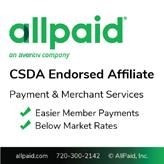








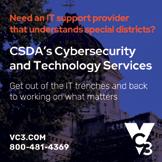

For the past 28 years, I have developed a niche market, providing advisory services and customizing investment management strategies for over 38 special districts in California.
Sandra Hedstrom Wheeler Vice President/Investments
(805) 903-1065 | (877) 816-1231 sandra.wheeler@stifel.com www.sandrahedstromwheeler.com

Stifel, Nicolaus & Company, Incorporated Member SIPC & NYSE



